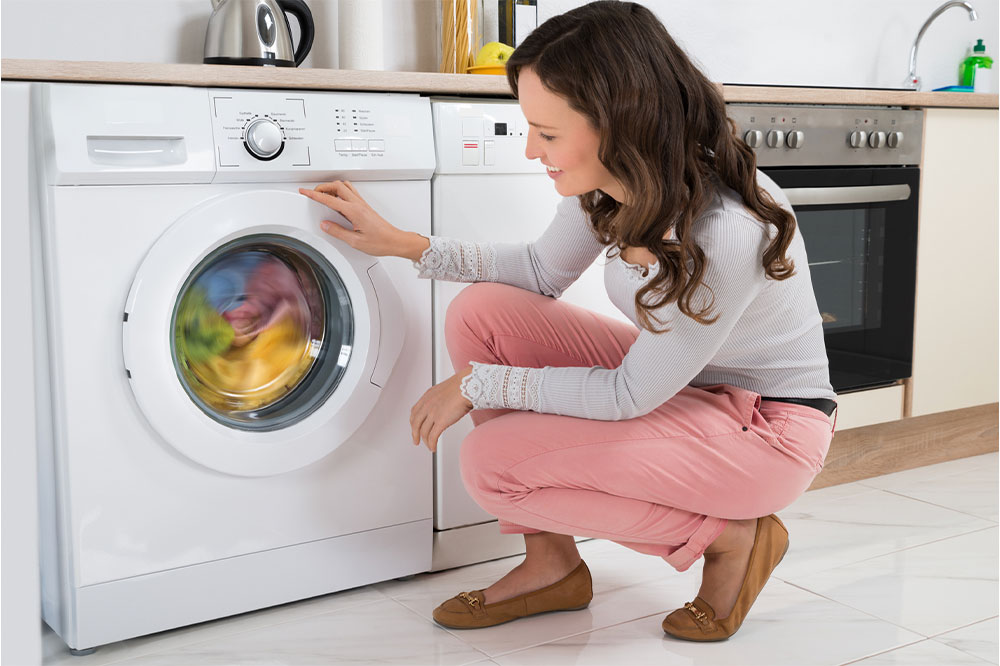The ultimate guide to washers and dryers
Washers and dryers have become essential household appliances across the country. Features of the available washers and dryers are designed to effortlessly produce clean laundry by using less water and energy. If you are planning to buy these appliances, it is important to understand the different types of washers & dryers. This will help you make an informed decision about the type of washer and dryer you need for your laundry.

Top-load Washer
This traditional type of washer features a door on its top panel. It is less expensive and can match any dryer. These washers either have a swing open or drop-down door and cannot be stacked. Top-load washers use an agitator designed to move the clothes around for cleaning. The presence of the agitator also reduces the top-load capacity making it ideal for those with small laundry loads. The benefits of these washers are that one doesn’t have to bend down to put and remove the clothes, and can toss in any laundry you might have missed while the cycle is running.
High-Efficiency Top-Loaders
High-Efficiency top-loaders offer better results with less use of water and energy. Though a top-loader, it does not use an agitator but instead uses an impeller to move water in the drum. High-Efficiency top-loaders are gentle on fabrics, have a larger load capacity, and cost more. They have longer wash cycles and also require a special high-efficiency detergent.
Front-load washers and dryers
A popular choice is the front-load washers & dryers that feature a front panel through which you can load your clothes. These appliances use the tumbling method and may use 30 percent less water than traditional washers. However, they are expensive, and the cycle timings are longer than top-loaders. Front-load washers & dryers can be categorized into
Compact washers & dryers are perfect laundry appliances for small spaces such as apartments or lofts. They can be stacked, saving a lot of floor space.
Full-size washers & dryers are 2.1 cubic feet or larger, and the dryer can be positioned on the side.
Mega-capacity washers & dryers are designed to handle large loads, ideal for big families with never-ending laundry. They usually have a capacity of more than 5 cubic feet.
High-efficiency front-load washers
High-efficiency front-load washers feature short paddles or fins perpendicular to the sides. The drum spins vertically, similarly to a dryer. When the cycle begins, it automatically determines the amount of water needed and mixes the detergent with the water. The fins lift the clothes to the top of the drum and then drop back down to give you the best laundry results.
Stacked Washers and Dryers
Stacked washers & dryers, also called laundry centers, are permanently attached appliances. A great advantage of these appliances is that they free up floor space. Stacked washers come with either gas or electric dryers. They usually have less capacity than other types, which means less room for laundry loads adding to your laundry time. Hardly any manufacturers are currently producing laundry centers.
Washer dryer combo Units
The washer dryer combo unit, also called an all-in-one washer dryer, handles the washing and drying in one compact unit. They look like a standard front load washer but have a built-in ventless dryer. These appliances are ideal for areas where space is limited.
Smart washers and dryers
These laundry appliances connect to the internet or a smart home network and give you more control over your laundry. With smart technology, you get notifications on your phone when a cycle finishes, and you can remotely monitor cleaning cycles.
Specialty washers
Besides the classic designs, innovative and unique washers & dryers are also available. Some full-sized washers feature a small pedestal washer ideal for handling small loads. There are also models with two washers boosting capacity where the additional unit on top cannot be separated.
Dryers can further be categorized into:
Gas dryers
Gas dryers use gas for drying the laundry and require a ventilation system.
Vented dryers
Vented dryers are a common type that removes moisture through a vent. Vented dryers also have the largest capacity compared to other types of dryers.
Condenser or electric dryers
A condenser dryer pulls air from your laundry room and uses a heat exchanger to cool the heated air. This process is repeated until the clothes dry.
Heat pump dryers
Heat pump dryers are also ventless and do not need a separate heating element. The dryers reuse the heated air in a closed-circuit system to dry the laundry. These dryers are more energy-efficient than vented or condenser dryers. Ventless dryers can be stacked or placed side-by-side with the washer.
Contemporary washers & dryers come with the latest features, such as laundry scheduling, steam sanitization, and many others. After deciding on the type of washer, check the features you may need in your laundry routine.

